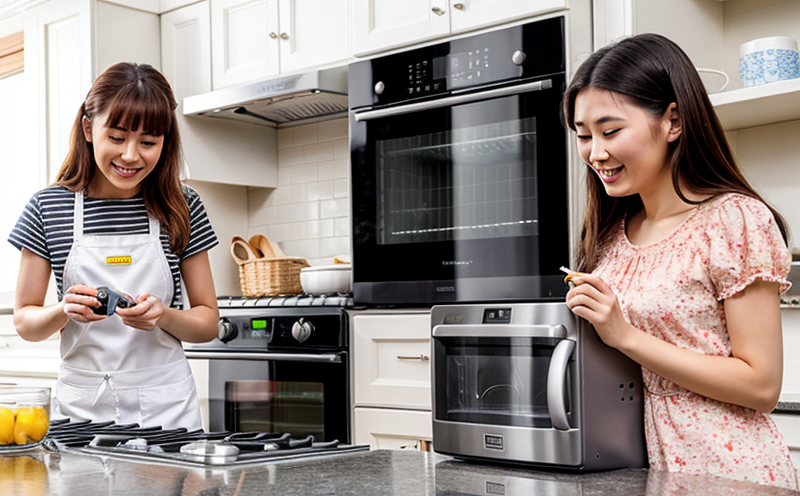IEC 60335 2 14 Safety Testing for Kitchen Appliances
The International Electrotechnical Commission (IEC) standard IEC 60335-2-14 is a comprehensive set of safety tests that are mandatory and apply to a wide range of household electrical appliances. This standard ensures the products meet essential safety requirements, protecting users from potential hazards such as fire, electric shock, or mechanical injuries.
IEC 60335-2-14 covers several key areas, including thermal, electrical, and mechanical testing. The tests are designed to simulate real-world use conditions that might cause a hazard. Compliance with this standard is essential for manufacturers looking to enter international markets where it may be mandatory.
The standard applies to a broad range of household appliances such as toasters, coffee makers, electric kettles, and irons. It ensures the safety of these products throughout their lifecycle, from design and manufacturing through distribution and use by consumers.
Testing under IEC 60335-2-14 involves multiple steps that include initial inspection, visual examination, electrical tests, mechanical strength testing, and more specific tests such as overvoltage protection, temperature stability, and durability. Each test is designed to assess different aspects of the appliance's safety features.
One crucial aspect of this standard is the requirement for manufacturers to provide detailed documentation about the testing process. This includes the setup conditions, parameters used during testing, and results obtained from each test. Compliance officers often review these documents to ensure thorough adherence to IEC 60335-2-14.
For R&D engineers, understanding this standard is vital for designing products that not only meet safety requirements but also perform well in market conditions. The standard provides a framework to identify potential risks early in the design phase and address them proactively.
The testing process itself can be complex, involving specialized equipment and trained personnel. Laboratories must have ISO/IEC 17025 accreditation to perform these tests accurately and reliably. This ensures that the results are credible and accepted internationally.
Compliance with IEC 60335-2-14 is not just about avoiding penalties but also enhancing brand reputation and customer trust. By adhering to this standard, manufacturers can ensure their products are safe for use in any household setting around the world.
Why It Matters
Compliance with IEC 60335-2-14 is crucial for several reasons. First and foremost, it protects consumers from potential hazards that could arise due to faulty design or manufacturing processes. By adhering to this standard, manufacturers ensure their products are safe not only in the laboratory but also when used by end-users.
Secondly, compliance with this standard can significantly reduce the risk of product recalls and legal actions. Many countries have made it mandatory for certain household electrical appliances to comply with IEC 60335-2-14. Failure to meet these requirements can result in hefty fines and damage to a company's reputation.
Thirdly, complying with this standard can open up new markets for manufacturers. Many countries have adopted the IEC standards as their national standards, making it easier for products that comply with IEC 60335-2-14 to enter these markets without additional testing requirements.
Finally, compliance with this standard demonstrates a commitment to quality and safety, which is increasingly important in today's competitive market. Consumers are more informed than ever before, and they expect products that meet the highest standards of safety and reliability.
Industry Applications
- Toaster Ovens: Testing to ensure proper temperature control and overvoltage protection.
- Coffee Makers: Ensuring the heating elements do not overheat or cause electrical shock.
- Electric Kettles: Checking for adequate insulation and correct polarity connections.
- Irons: Verifying the steam function does not exceed safe limits and that the cord is secure.
- Toasters: Ensuring the toaster opens at the appropriate temperature without causing a fire hazard.
- Cooking Appliances: Testing for thermal stability and ensuring all components are securely fastened.
- Food Processors: Verifying the blade assembly does not cause any injury or malfunction.
- Microwaves: Ensuring the door latch is secure and that no electrical leakage occurs.
Use Cases and Application Examples
In practice, IEC 60335-2-14 safety testing involves multiple steps. The initial inspection includes a visual examination of the appliance to identify any obvious defects or discrepancies from the technical requirements.
The electrical tests include measuring insulation resistance, verifying ground continuity, and checking for leakage current. These tests are critical in identifying potential electrical hazards that could lead to electric shock.
Mechanical strength testing involves assessing the durability of components such as handles, doors, and other moving parts. This ensures they can withstand normal use without breaking or causing injury.
One specific example is a coffee maker where overvoltage protection tests are conducted to ensure that the appliance can handle higher voltage levels safely without malfunctioning or causing fire risks.
In another instance, an electric kettle might undergo temperature stability testing to confirm that it does not exceed safe temperatures during operation. This helps prevent overheating and potential fires.
For irons, durability tests are performed to assess how well the iron withstands repeated heating cycles without losing its performance or causing damage. These tests are crucial for ensuring consumer safety and satisfaction.





